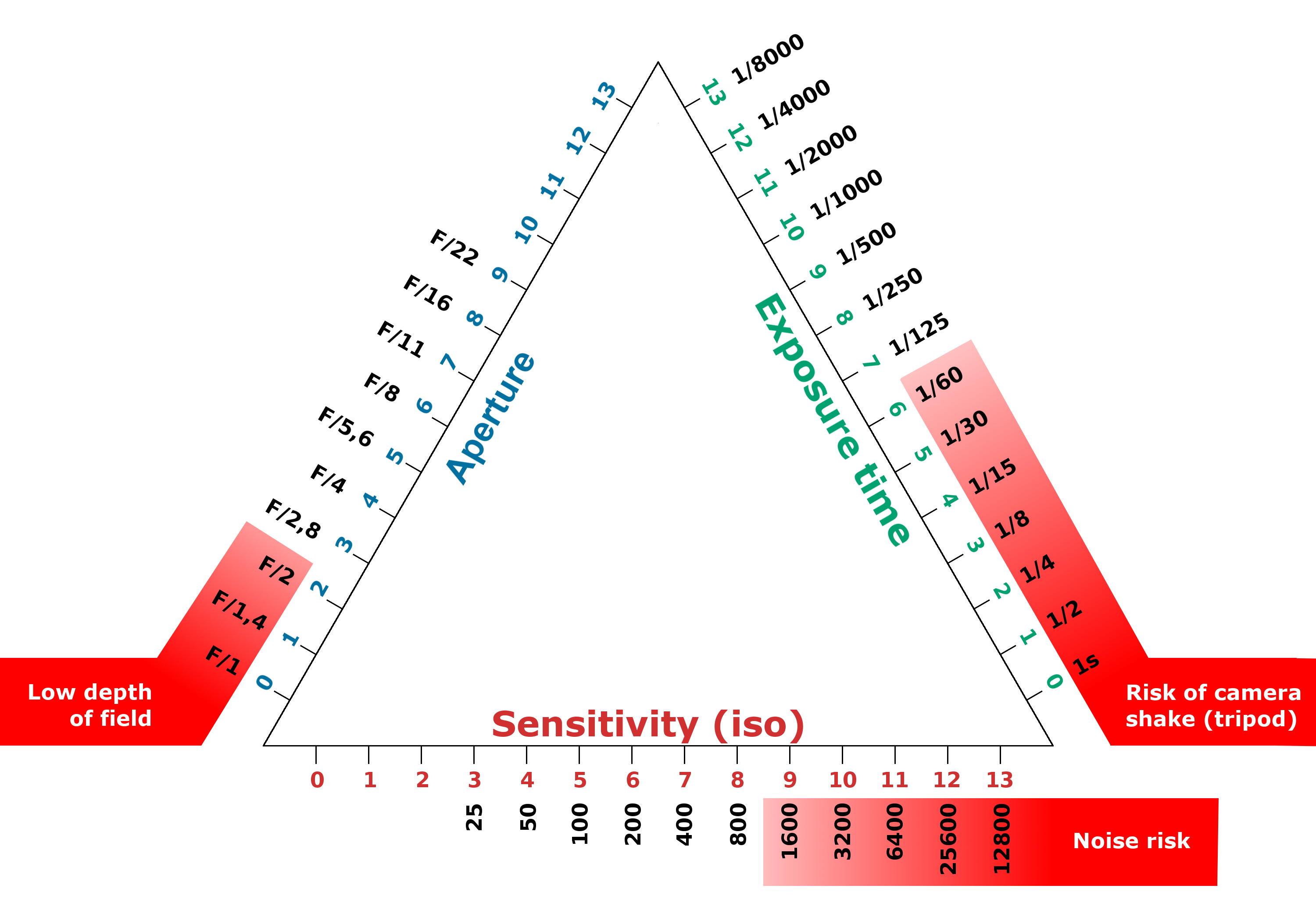Tutorial - Setting the exposure.
Javascript must be enabled on your browser

Adjusting exposure means controlling the amount of light that reaches the camera's sensor or film.
There are three settings that influence exposure: aperture, exposure time (also incorrectly known as speed) and sensor sensitivity.
Aperture, sensitivity and exposure time.
- Aperture is determined by the diaphragm. This is a mechanical accessory, made up of adjustable blades, which allows the
size of the aperture to be adjusted.
Naturally, the larger the aperture, the more light reaches the sensor.

The diaphragm of a camera - Exposure time. As its name suggests, exposure time is the length of time during which light is allowed to enter the camera,
and more specifically the sensor (or film). Exposure time is expressed in fractions of a second: 1/125th, for example.
The shutter adjusts the exposure time: when the camera is at rest, it shades the sensor to keep it in complete darkness; when a photo is taken, it opens precisely for the time specified. - Sensitivity. This is a setting that makes the sensor more or less sensitive to light. Sensitivity is expressed in ISO :
100ISO,400ISOfor example.
Digital cameras have the advantage of allowing sensitivity to be adjusted at any time. With a film camera, sensitivity is defined by the film installed in the camera: you had to change the film to change the sensitivity.
Along with focus, exposure is a setting that absolutely must be correct when the photo is taken. Post-processing software can be used to modify exposure, but if this adjustment is significant, the final quality of the photo will suffer.
There are always several combinations of settings that give the correct exposure: halving the exposure time can be compensated for by doubling
the sensitivity, or by opening the diaphragm wider.
But each of these three settings has more than just an impact on exposure: among all the settings that give a correct exposure, there is usually
one that is better than the desired result,
- Aperture affects depth of field (the sharp area in front of and behind the subject). A low aperture also causes a flickering effect, which may be desirable or to be avoided depending on the case.
- The exposure time can be used either to freeze a movement (short exposure time), or on the contrary to obtain a blurred effect, effect that may be desired.
- Finally, when sensitivity is too high, the quality of the photo is degraded (presence of noise).
Simulator for exposure adjustment.
The animation below will help you understand the effect and operation of the three exposure settings.
1 - First select an ambience :
2 - Then adjust the settings to obtain the correct exposure :
3 - Press the shutter button

Correct exposure
Underexposed image
Overexposed image
Legend :



The exposure triangle.
These three parameters for adjusting exposure are often represented in the form of a triangle. However, in our opinion, this representation does not help in understanding these three parameters.
However, the exposure triangle can be useful for finding equivalent parameter combinations, provided that the EV are noted
on the diagram
We can see that an increase of 1 EV corresponds to twice as much light reaching the sensor.
Conversely, a decrease of 1 EV corresponds to a division by 2 of the amount of light reaching the sensor.
Here's how to find an equivalence between two settings :
F/4 - 1/125 - 200ISO donne, après traduction en IL : 4 + 7 - 6 = 5
Ce qui est équivalent à F/4 - 1/250 - 400ISO, soit 4 + 8 - 7 = 5

Typical representation of the exposure triangle
The parameters are limited by the capabilities of the hardware. For example, it is rare to have apertures beyond F/22 or sensitivities below ISO 50.
But even if the equipment allows it, it is often inadvisable to push the cursors too far.
For example, below 1/60th of a second, there is a high risk of motion blur.
If you have to work with such a long exposure time (also known as such a low shutter speed), consider using a tripod.
Similarly, raising the sensitivity causes noise to appear in the image (parasites). The maximum acceptable value depends on the camera.
Finally, very large apertures (F/1.4) give very shallow depths of field
so you'll need to focus very precisely to get a good shot.


If you liked this page, share it on your favorite network :